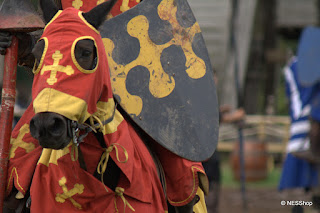I have had an avid interest in medieval history and in particular european medieval history, or the Middle Ages spanning from the 5th to the 15th century, for some years now. My readings to date relating to this period, and the people who lived in it, have covered: a general overview of Saxon Kings, a more detailed study of the Kings of England between The Norman Conquest and the conclusion of The Wars of the Roses with particular interest in Edward I, Edward II, Edward III, Roger Mortimer 1st Earl of March, Henry IV, Henry V, Joan of Arc, the Vikings and Norse Mythology. Through studying this portion of the Middle Ages I have become aware of many other significant figures and events throughout Europe and I am now undertaking a more official study regime making the most of the wealth of free online resources and courses. I have created this blog to document and share my progress, and as a study aid for me. I have learned and again forgotten so many facts through c...






